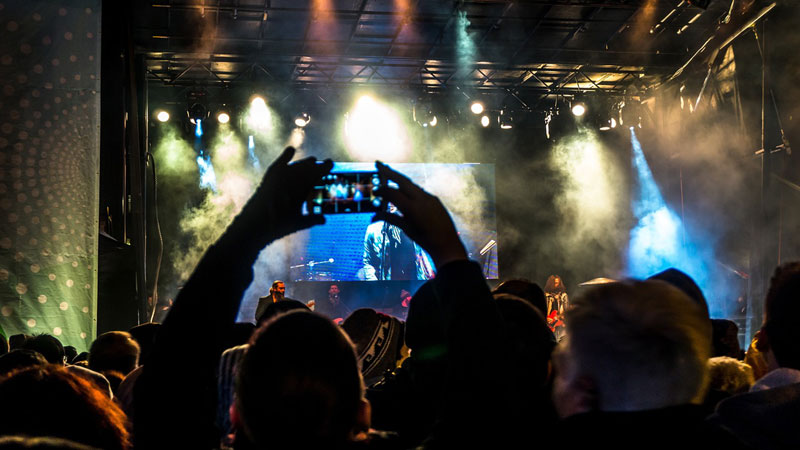Personal branding overkill is killing solo content creators
2 April 2024

Image courtesy of Pexels.
Rebecca Jennings, writing for Vox, on the tyranny of the personal brand, and the stifling effect they are having on content creators:
The internet has made it so that no matter who you are or what you do — from 9-to-5 middle managers to astronauts to housecleaners — you cannot escape the tyranny of the personal brand. For some, it looks like updating your LinkedIn connections whenever you get promoted; for others, it’s asking customers to give you five stars on Google Reviews; for still more, it’s crafting an engaging-but-authentic persona on Instagram. And for people who hope to publish a bestseller or release a hit record, it’s “building a platform” so that execs can use your existing audience to justify the costs of signing a new artist.
Back in the day, and I’m talking fifteen plus years ago, if you had any sort of online presence you effectively had a personal brand. It was a term that was frequently bandied about, often quite casually, but to me seemed like a set of (self-determined) guidelines to adhere to.
Boiled down, a personal brand helped maintain a consistency across your online activities. It was quite simple, mostly.
For someone like me, as a blogger/self-publisher, it meant standardising the avatar/log on my website, Twitter page, and things like (the long gone) MyBlogLog, and I was set. Back to blogging I went. Although some people took their personal brand (or, more specifically, the idea of a personal brand) more seriously than others, maintaining one was very much a part time effort. That’s because if you were a content creator (however you defined that: blogger, photographer, musician, artist, designer, author, whatever), being creative was what you did first and foremost. Times have changed.
Yet this is not the place I thought we would, one day, end up in. I do not rate myself as an artist, but I vividly recall the excitement the self-publishing potential of the internet evoked, when I launched the first iteration of disassociated in 1997. Back in the day, the internet presented itself as a space where creatives could carve out a niche of their own, free of intermediaries such as newspaper and book publishers, and record companies.
If they had something they wanted to share with the world, there was no longer anything stopping them. All they had to do was find an audience. And as a bonus, there a possibility they may even be able to make a little money from their craft in, what were then, newly minted roles as content creators. They could deal directly with anyone who was interested in their wares. Outside the costs of hosting a website, and owning a domain name, no one in the middle would be taking a cut.
A whole new age of opportunity seemed to be dawning.
And for a while, some creatives, musicians, writers, and other content creators, did well in this new self-publishing wonderland. Back then, these people centred their enterprise, their brand, their personal brand, on a website, and did so for some time. Even during the early years of the first decade of the twenty-first century, social media channels were far and few between.
Friendster and MySpace were among them, but they were largely for personal use. Facebook, Flickr, Reddit, and Twitter, began to appear, and at first were used as side-line web presences. Creatives were grateful for the extra exposure they offered, but generally didn’t stray far from their websites. But as the likes of Twitter evolved, some of the first self-made influencers began to emerge. By self-made, I mean people who were not celebrities, or music or movie stars, but had garnered large followings on the platform, in their own right.
They may not have had millions of followers, initially, but with several tens of thousands, were the envy of many. And so the shift began. Creatives wanting a spot in the limelight, began devoting more time and energy to social media. YouTube, Instagram, and TikTok added to the frenzy when they arrived. Social media channels had the audiences already. Massive audiences. It was only a matter of finding a slice of the collective gaze.
Content creators could throw out the SEO handbook; they no longer needed to drag visitors, kicking and screaming, onto their websites. Before long, the big social media channels were just about the only game in town, and if you weren’t on-board, you were out in the cold. Long gone was the content creator’s individually owned and branded website.
That in turn, heralded another change. Instead of being a part time web designer, content creators were taking on the role of marketers, and full time administrators of their personal brand. Fine of course if you have the luxury of a social media manager who can take care of your self-promotion, leaving you to focus on whatever it is you do. But solo content creators usually do not have that luxury. So when creatives are spending more time maintaining their personal brand, and less on creative or artistic output, something’s clearly not right.
How is anyone meant to bring forth quality work, when they’re thinking only of self-promotion? No doubt some are managing, but many would be struggling. But personal branding overkill is only part of the problem. The returns for content creators aren’t what they used to be.
Publishing advances for authors have decreased, as have royalty payments for musicians. This is partly a supply matter. With so many artists and content creators vying for audience attention, some are going to be overlooked. Musicians also have to contend with the algorithms on the music streaming services. If their work isn’t put on high-rotation, few ears are going to hear it. And recent changes to the way Spotify makes royalty payments is only going to make matters worse. To be eligible to receive a royalty, a track must be listened to at least one thousand times a year.
What an appalling, and sad, state of affairs, one far, far, removed from the almost utopic cyberspace realm the self-publishers of the late 1990’s envisaged. Certainly the problems are easy to identify, but the solutions are going to be little more elusive. In the meantime, perhaps some consolation can be taken form the artists themselves. I like to think they’ll come through this. They’re survivors; they’re used to doing it tough. Not that anyone should be using that to their advantage.
RELATED CONTENT
content production, social media, social networks, technology
